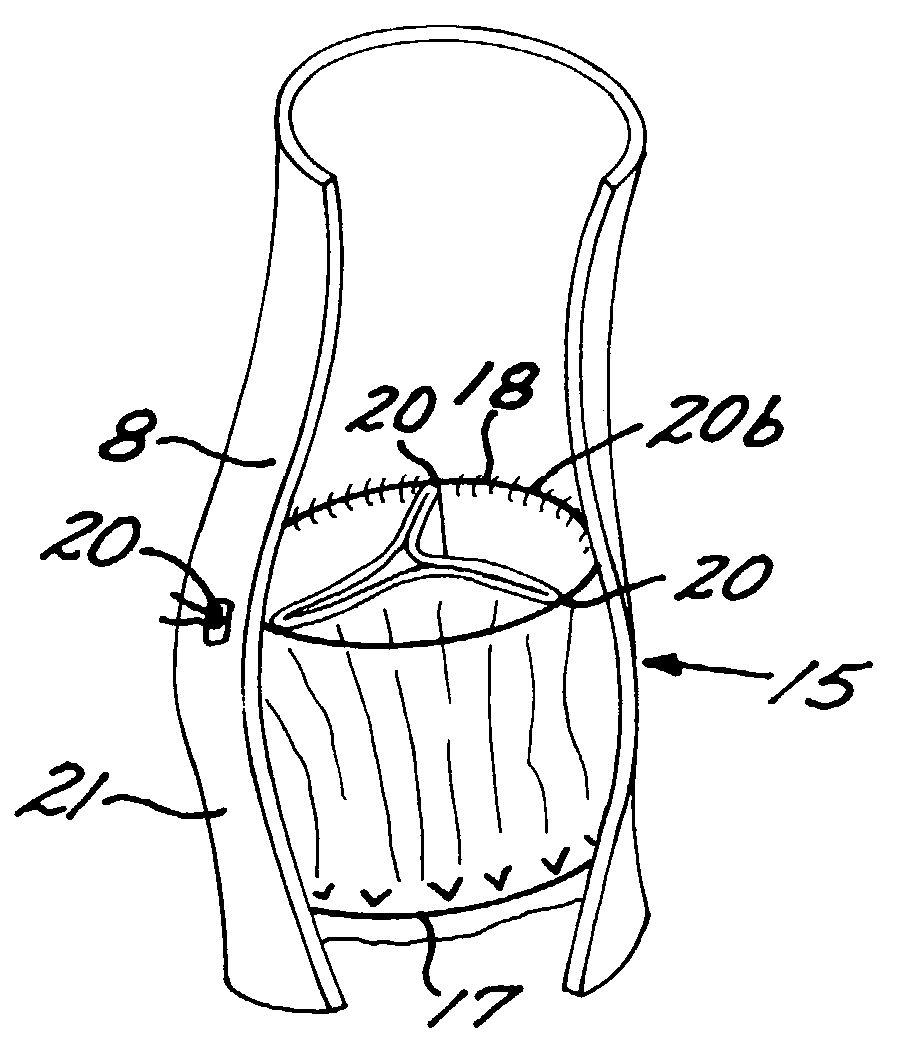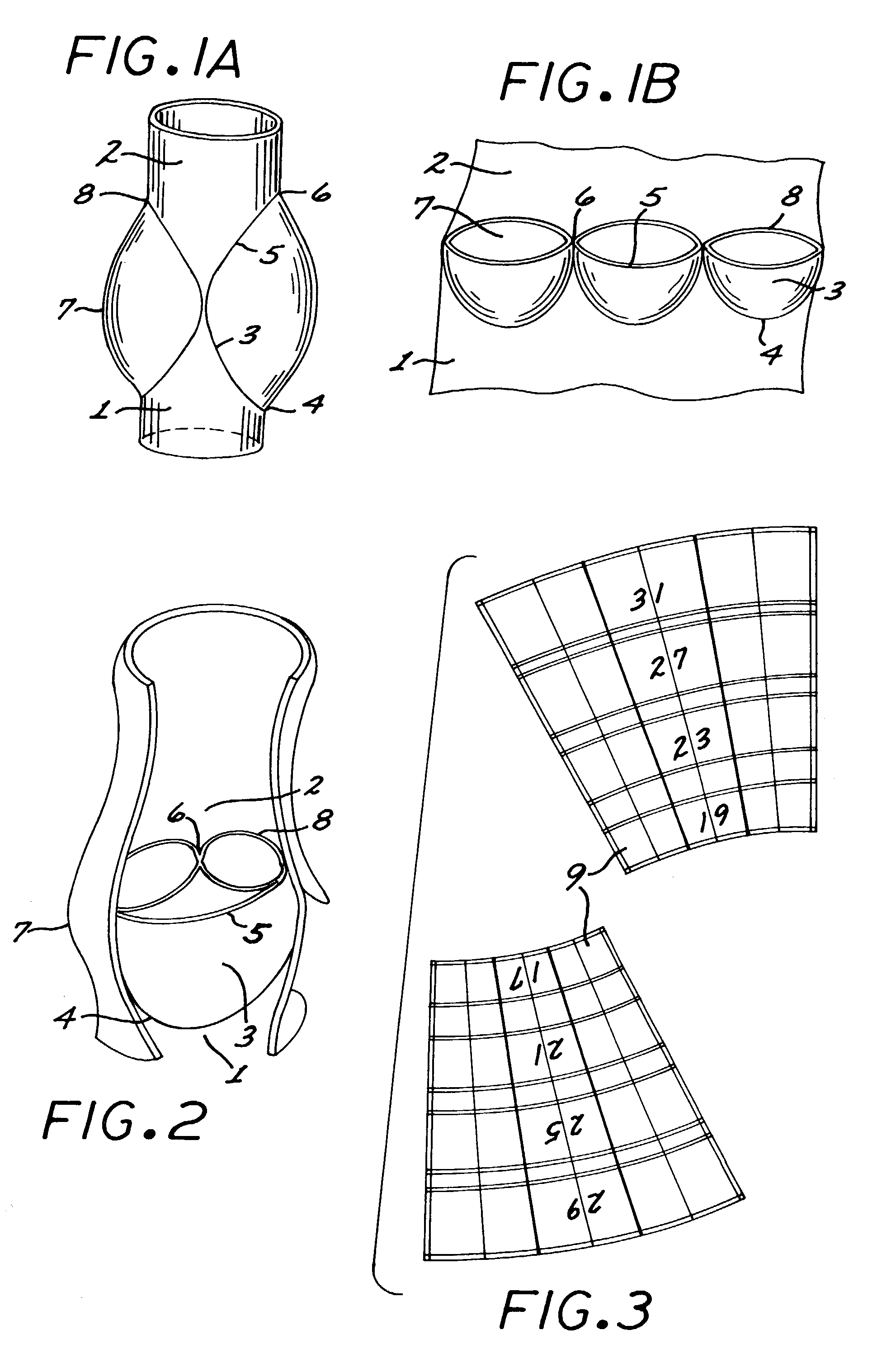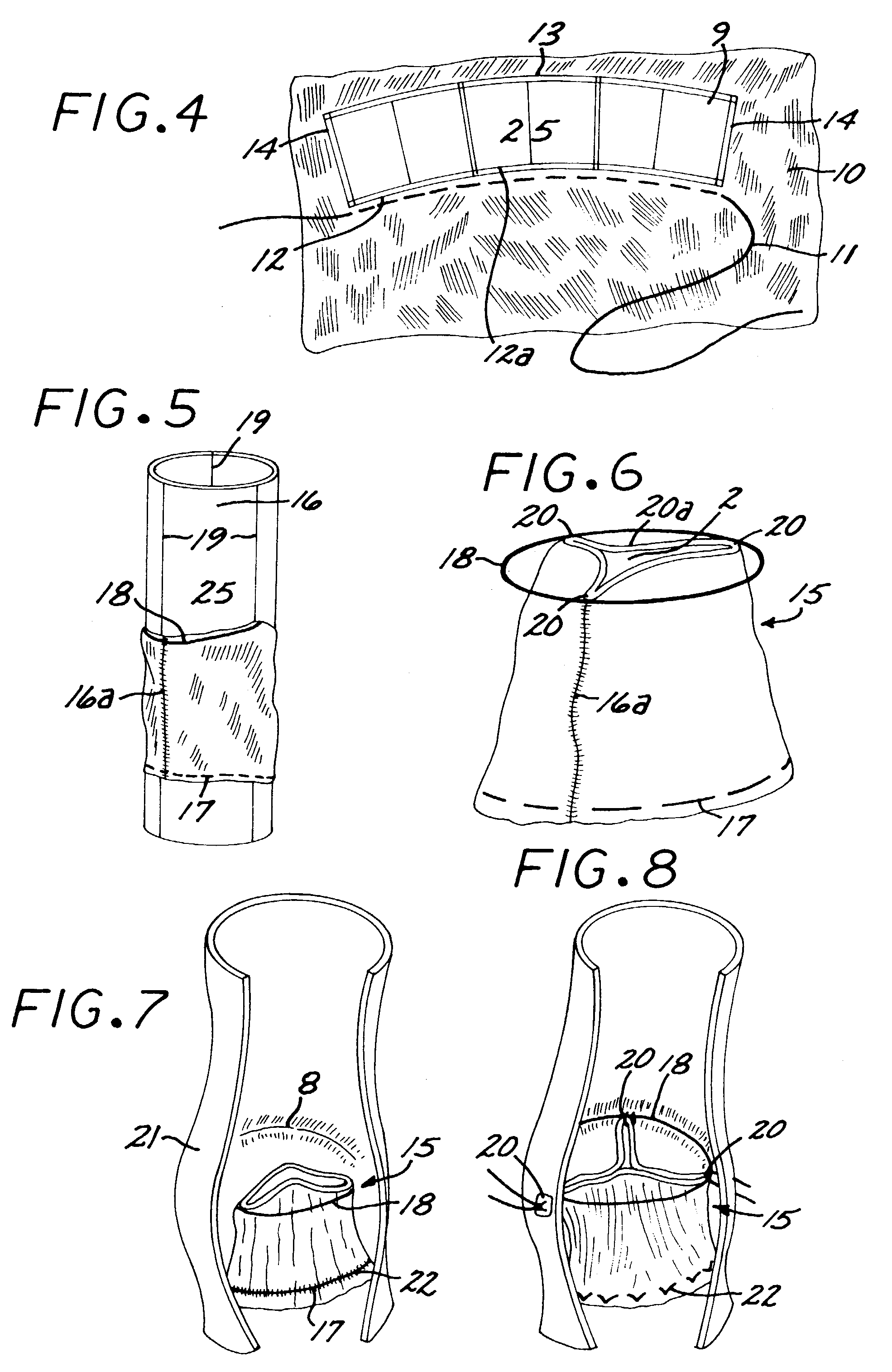Reed valve for implantation into mammalian blood vessels and heart with optional temporary or permanent support
a technology of sigmoid valve and reed valve, which is applied in the field of one-way valves, can solve the problems of backflow, impaired function of sigmoid valve, and inability to fully support the heart, and achieve the effect of simplifying its implantation
- Summary
- Abstract
- Description
- Claims
- Application Information
AI Technical Summary
Benefits of technology
Problems solved by technology
Method used
Image
Examples
second embodiment
[0040]the holder of the present invention shown in FIGS. 10B and 10C) also includes three substantially equal chords that connect the inflow and outflow disks. These chords are located at the level of the commissures of the reed valve, and their length corresponds to the total height of the reed valve. The purpose of these two techniques (stopper or cords) for limiting the maximum distance between the disks (and therefore between the inflow and outflow orifices of the reed valve) is to achieve correct deployment of the reed valve without either folding it if the inflow and outflow orifices are too close or unduly stretching the tissue if the inflow and outflow orifices of the reed valve are too far apart.
first embodiment
[0041]When the holder of the invention is used to support the valve by placing the holder inside the valve, then a mechanism or means need to be provided to temporarily reduce the effective diameter of the holder so that it can be inserted into the valve, and be removed from it to complete the surgical implantation process. The first embodiment shown in FIGS. 10A and 12A and 12C accomplishes this by virtue of the rings being contractible and expandable, as described in more detail below. In the second preferred embodiment shown in FIGS. 10B and 12B the disks are capable of changing their angle in relation to the rod (FIG. 12B). In one position the disks are at 45 degrees to the rod and in a second position the disks are perpendicular to the rod. The holder is introduced through the valve with the disks at 45 degrees and once in the correct location the disks are moved to the perpendicular (and wider) position.
[0042]The holder of the present invention can be disposable. Therefore, it...
PUM
 Login to View More
Login to View More Abstract
Description
Claims
Application Information
 Login to View More
Login to View More - R&D
- Intellectual Property
- Life Sciences
- Materials
- Tech Scout
- Unparalleled Data Quality
- Higher Quality Content
- 60% Fewer Hallucinations
Browse by: Latest US Patents, China's latest patents, Technical Efficacy Thesaurus, Application Domain, Technology Topic, Popular Technical Reports.
© 2025 PatSnap. All rights reserved.Legal|Privacy policy|Modern Slavery Act Transparency Statement|Sitemap|About US| Contact US: help@patsnap.com



